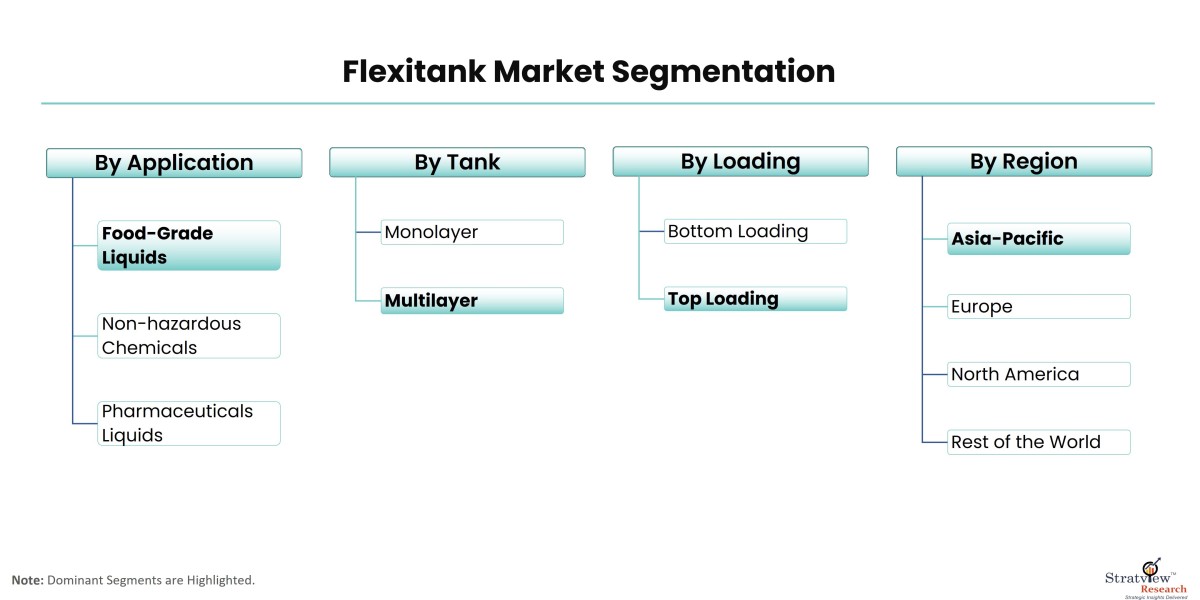According to Stratview Research, the flexitank market was estimated at USD 807.95 million in 2022 and is likely to witness a CAGR of 18.75% during 2023-2028 to reach USD 2292.16 million in 2028.
In the intricate world of liquid logistics, efficiency, versatility, and cost-effectiveness reign supreme. The flexitank market has emerged as a game-changer in this realm, offering innovative solutions that revolutionize the transportation of liquids. As industries worldwide seek to optimize their supply chains and adapt to changing market dynamics, it's crucial to explore the latest trends shaping the flexitank market. In this article, we delve into the transformative trends driving liquid logistics forward and the role of flexitanks in this evolving landscape.
Flexitanks: Redefining Liquid Logistics
Flexitanks, also known as flexibags, have transformed the way liquids are transported across the globe. These large, flexible containers offer a versatile alternative to traditional shipping methods, such as drums, IBCs, and tank containers. Made from robust materials like polyethylene or polypropylene, flexitanks can hold up to 24,000 liters of liquid and are compatible with standard shipping containers, making them ideal for long-distance transportation by sea, rail, or road.
The allure of flexitanks lies in their ability to maximize cargo capacity while minimizing transportation costs. Unlike rigid containers, flexitanks can be folded and transported empty, reducing return freight expenses significantly. Additionally, their lightweight construction, easy installation, and minimal handling requirements make them a preferred choice for industries seeking efficient and cost-effective liquid logistics solutions.
Trends Shaping the Flexitank Market
Several key trends are driving innovation and growth in the flexitank market:
Rising Global Trade: With the globalization of markets, the demand for efficient liquid transportation solutions is on the rise. Flexitanks offer a flexible and economical option for industries involved in international trade, enabling them to transport liquids in bulk quantities seamlessly.
Diversification of Applications: Flexitanks find applications across a wide range of industries, including food and beverage, chemicals, pharmaceuticals, and agriculture. From transporting edible oils and wine to chemicals and latex, flexitanks cater to diverse liquid cargo requirements, fueling their adoption across various sectors.
Focus on Sustainability: Sustainability has become a key priority for businesses and consumers alike. Flexitanks, with their ability to reduce carbon emissions and minimize waste, are emerging as a more environmentally friendly alternative to traditional shipping methods. As companies strive to minimize their environmental footprint, the demand for sustainable logistics solutions like flexitanks is expected to grow.
Future Outlook and Opportunities
Looking ahead, the future of the flexitank market is bright, with several opportunities for growth and innovation:
Technological Advancements: Continuous innovation in flexitank design and manufacturing processes is enhancing performance, reliability, and safety. Advanced materials, improved barrier properties, and innovative loading and unloading systems are driving efficiency gains and expanding the applicability of flexitanks to new industries and products.
Expansion into Emerging Markets: The flexitank market is witnessing expansion into new geographic regions and emerging economies. As developing countries increase their participation in global trade, the demand for flexible and cost-effective transportation solutions is expected to rise, creating new opportunities for flexitank manufacturers and logistics providers.
Collaboration and Partnerships: Collaboration across the supply chain is essential for unlocking the full potential of the flexitank market. By working closely with manufacturers, shippers, and end-users, stakeholders can optimize processes, address challenges, and capitalize on emerging trends, driving innovation and growth in the market.
In conclusion, the flexitank market is revolutionizing liquid logistics, offering unparalleled flexibility, efficiency, and cost-effectiveness. As industries continue to embrace this innovative solution, the potential for growth and expansion is limitless. By staying abreast of emerging trends, investing in technology, and fostering collaboration, stakeholders can harness the transformative power of flexitanks to revolutionize liquid logistics and drive global trade forward.



